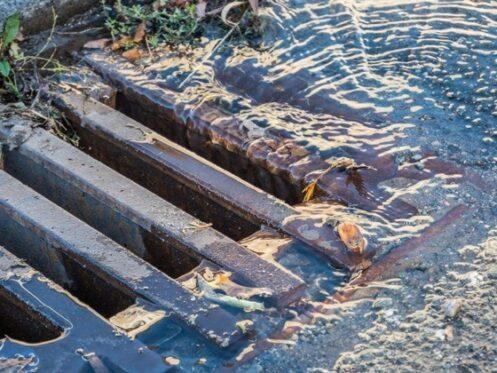Stormwater drains are important for a variety of reasons, one of which is the fact that they help to clean up rainwater and runoff from streets and parking lots. However, if your stormwater drain becomes clogged, it can become difficult to unblock it. This article will teach you how to clear a blocked stormwater drain using simple tools and techniques.
Understanding the Drainage System
If you live in an area that experiences regular flooding, you know how frustrating it can be when your storm drain becomes blocked. In this article, we’ll show you how to clear a blocked stormwater drain using simple steps.
First, determine if the blockage is due to leaves, branches, or other debris. Remove any large objects that are blocking the drainage. Next, use a plunger to suction the debris and pull it out of the drain. Finally, pour a pot of boiling water down the drain and wait until the blockage clears before draining the water back into the ground.
Clearing a Blocked Stormwater Drain
When your stormwater drain becomes blocked, you may be able to clear the obstruction using a plunger or a bucket.
If the Drain is over 10cm in diameter, use a plunger. If the Drain is under 10cm in diameter, use a bucket. Allow water to flow freely for 1 minute after using the plunger or bucket before attempting to clear the obstruction again. Use caution when clearing obstructions as they may be sharp.
Tools Needed
- A plunger
- Copper pipe
- Tape measure
- Joint compound
- Carpenter’s level
- Razor blade
- Socket set
- Hammer
How to Clear a Blocked Stormwater Drain
If your storm drain is backed up, you may need to clear the blockage using a plunger. To do this, place the plunger over the blocked opening and push and pull the plunger until the obstruction has been dislodged. If the obstruction is large, use a copper pipe to snake around it and dislodge the debris. Once the obstruction is gone, use a tape measure to mark the length of the pipe and cut off the excess with a razor blade. Next, use joint compound to fill in any cracks or gaps in the piping. Finally, use a carpenter’s level to check that the pipe is straight and hammer to secure the screws if necessary.
Another option is to use a hydro-jetter. Pour water into the hydro-jetter and press the button. The water shoots out of the nozzle and removes debris from the drain.
If neither of these options work, you may need to call a professional.
How Often to Clear a Blocked Stormwater Drain
It’s important to clear a blocked stormwater drain as often as necessary to prevent flooding. All professionals recommend clearing drains twice a year, but the frequency you need to clear your drain depends on the type of drainage system and your situation.
If your drainage system is an open channel, like a ditch or creek, you should clear it every month. If your drainage system is a sewer line or a combined sewer/stormwater drain, you should clear it every six months. If your drainage system is an underground basin or catches basin, you should clear it every three years.
Cleanup Tips After Clearing a Stormwater Drain
Clearing a blocked stormwater drain can be a hassle, but it’s important to do it quickly if flooding is imminent. Follow these cleanup tips to make the process as easy as possible.
- Clear away any debris that may be blocking the drain. This includes branches, leaves, and other large objects.
- Dig a trench around the drain opening using a shovel or your hands.
- Place a container of water at the bottom of the trench and push the debris towards the water until it’s all cleared away.
- Use a plunger to suction onto the debris and pull it clear of the drain opening. Be careful not to tear your clothing or skin on sharp objects in the sewer pipe!
- Sweep up any remaining debris and flush down the drain with hot water to clean everything out.
- Pour a bucket of water down the drain to clear any remaining debris and make sure the pipe is free of obstructions.
- Re-bury the soil around the drain opening and replace any fallen trees or branches.
- Call a professional to clear any larger clogs or drainage issues.
Tips on Preventing Blocked Stormwater Drain
One of the most common causes of drainage problems in your home or business is a blocked drain. Here are some tips on how to prevent this from happening:
- Clean up debris and leaves around the drain regularly. This will help reduce the amount of blockage that can form.
- If you have a storm sewer system, make sure all drains are properly installed and maintained. A blocked storm sewer can lead to drainage problems in your home or business.
- Check for clogs and blockages regularly. A blocked septic tank can also cause drainage problems in your home or business.
- If you experience water backing up into your home or business, check for any obstructions such as roots or rocks in the drainage system. If necessary, remove these obstructions and clean the drainage system as needed.
- If you experience drainage problems that don’t seem to be caused by any of the above, call a professional plumber like Reactive Plumbing to take a look. A blocked stormwater drain can quickly become a serious problem.
Conclusion
If you find yourself in a situation where your stormwater drain is overflowing, it’s important to know how to clear it as soon as possible. By following these simple steps, you can get the drainage problem under control and prevent any further damage from happening. If you have any questions about clearing a blocked stormwater drain or need help getting started, don’t hesitate to Contact Reactive Plumbing. We’re here to help!

